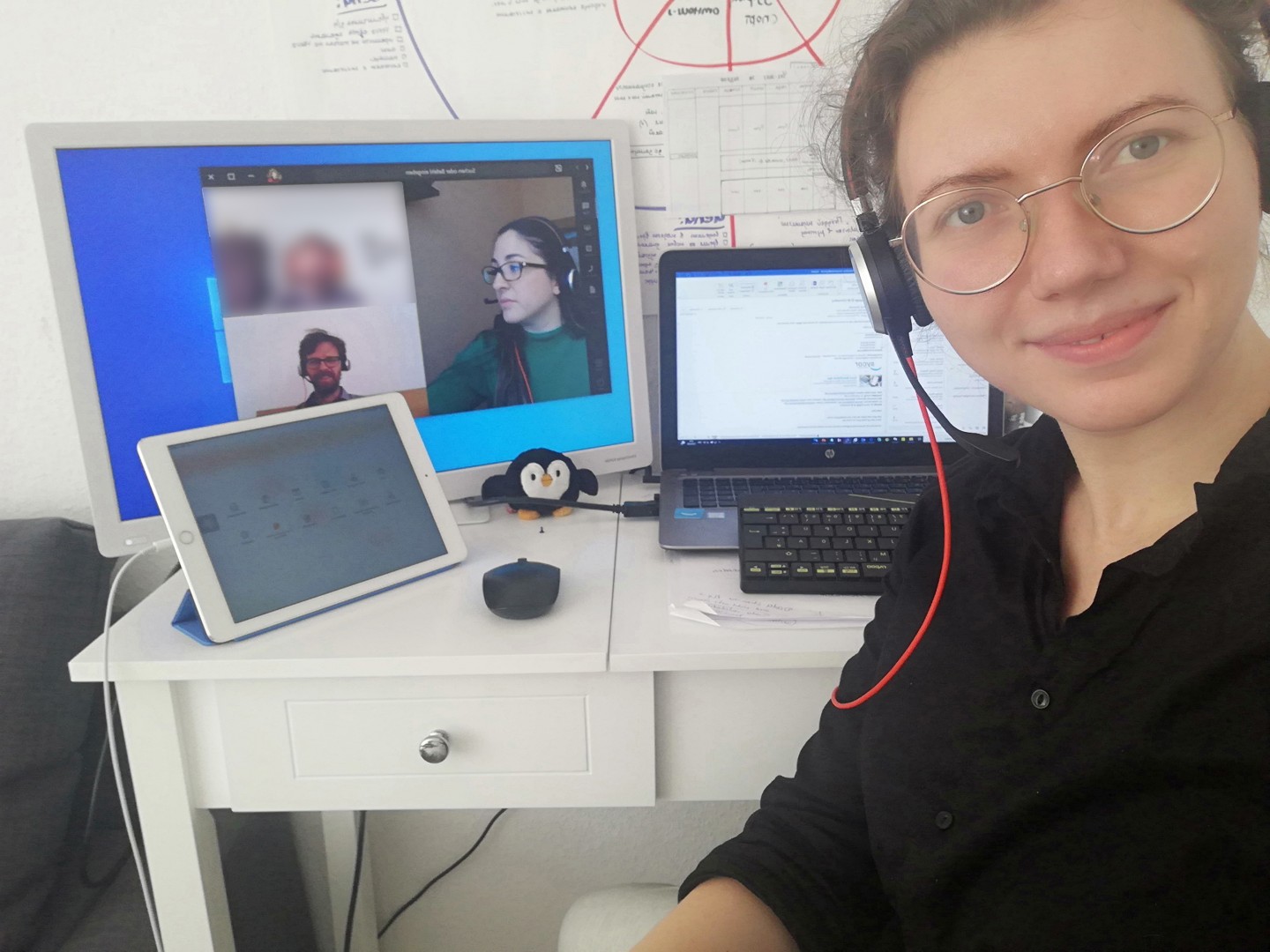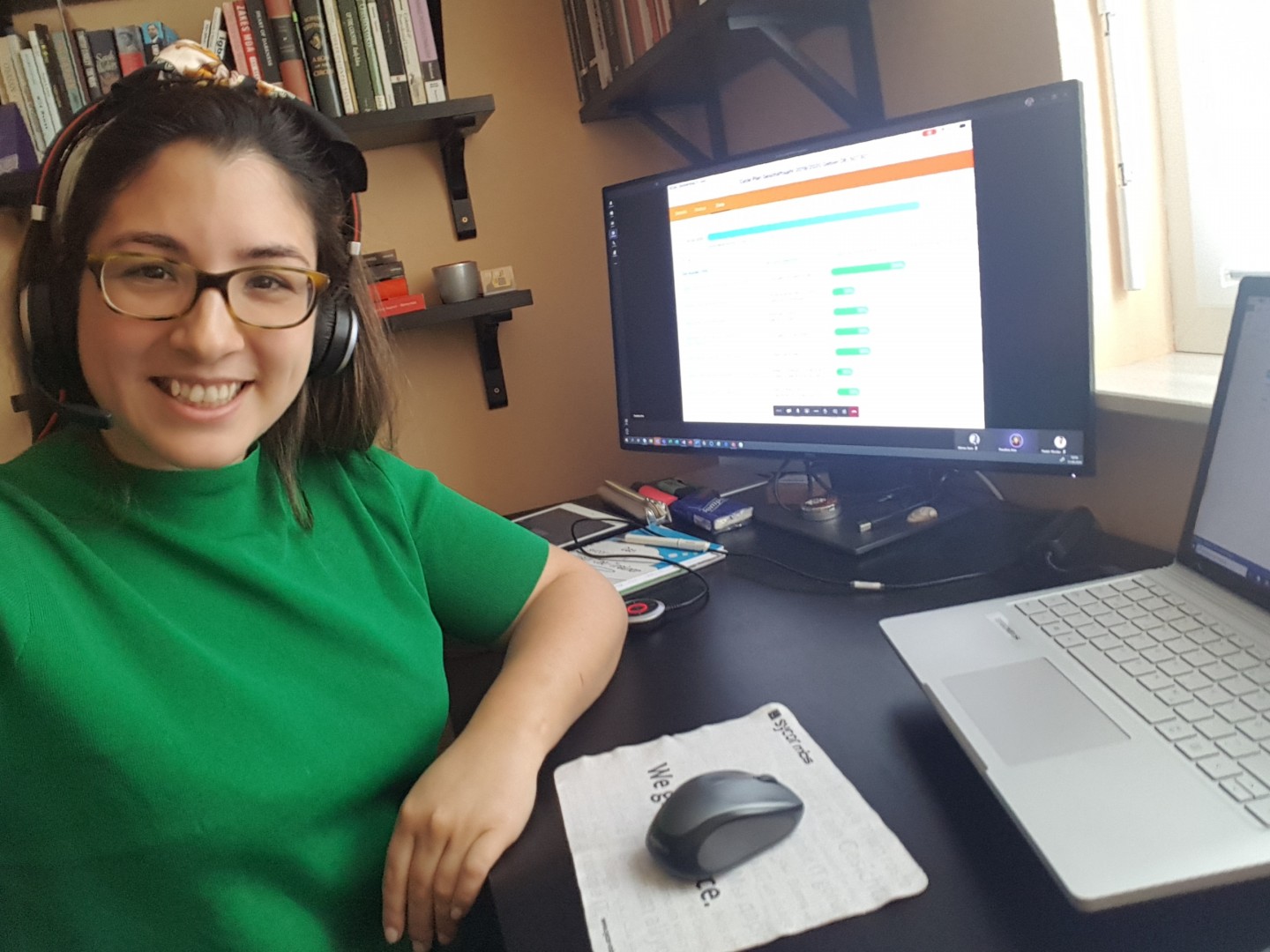
Training in the home office: Works differently - but it works
Training for customers is my passion. I think it is great to be able to teach people something new. And I always enjoy the personal contact very much. Since we can't go out at the moment, this highlight is denied to me - but in the meantime I could make friends with the remote trainings and found fun with them, even without direct eye contact.
Remote trainings are in great demand AND, I would hardly have thought it possible, they are as much fun as live trainings. But the challenges are greater at first, because without facial expressions, posture and eye contact it is difficult to tell whether the participants are bored or perhaps overwhelmed.
That's why we have expanded our existing trainings with methods that somewhat balance out this personal impression. For example, we have significantly expanded the pictorial representations in our presentations and ask questions more frequently during the training in order to involve the participants more. We try to interact as often as possible. After all, you know what it's like when you have to stare at the screen for a long time without being active yourself. Concentration decreases and you quickly become distracted. In addition, there is always a contact person available in the chat to answer questions or deal with technical challenges.
Bye, bye one-(wo)man-show
Schnell war uns klar, dass es mit einem Trainer allein nicht getan ist. Zur Betreuung des Chats oder um ggf. technische Fragen im Hintergrund zu klären, arbeiten wir in den Schulungen nicht allein. Je nach Teilnehmergröße ist mindestens eine weitere Person dabeIt soon became clear to us that a trainer alone was not enough. To supervise the chat or to clarify technical questions in the background, if necessary, we do not work alone in the training sessions. Depending on the number of participants, at least one additional person is present. However, there have been five of us before. So everyone has to know exactly what his/her task is so that everything runs smoothly in the training.
The training sessions are usually timed in the same way as live events. However, we plan several small "organic" breaks throughout the day and, of course, a lunch break. The breaks are especially important because not all participants have their own room at home and this can cause stress, which we try to reduce a little bit with the breaks. In addition, we also promote concentration.
For us, the day begins well before the actual event, so that it starts on time. Often ad hoc technical challenges or other things have to be mastered. Therefore, our team starts at least half an hour before the start time.i. Wir waren jedoch auch schon einmal zu fünft. Da muss jeder genau wissen, welche Aufgabe er/sie hat, damit in der Schulung alles glatt läuft.

Technology counts
At the beginning of the training courses we always first deal with the system used. Usually we use Microsoft teams. The participants* often have very different experiences in using the technology and so it is important to familiarize them with camera use, presentation of the screen (many windows open), muting, etc. Sometimes, when the camera is not muted or activated, we also get impressions from the home environment - through a child asking a question or when the letter carrier rings the bell.
This has its very special charm, at least in our training, but in customer contact private things should be hidden. We are happy to explain this with the help of (amusing) pictures, which show how it should not be.
By the way, the invitations to the training courses always come from the company that commissions the training. This ensures that the participants all come to the session and that the company's compliance requirements are met.
Patience is key
Before my first online training I was quite nervous and excited. In the meantime I'm a bit calmer, but it's still exciting every time: Sometimes you can't get into the customer system, sometimes there are no answers to questions asked in the training, sometimes I'm not sure if the participants* have understood me. I had to learn (and this is really hard for me) to be patient, because there is always feedback, even if it takes a while. Of course, we also thought of something in case nobody answers. We then simply speak to a participant from the group or coordinate with key users or participating managers of the company to provide initial ideas as impetus. After that it is a sure thing ...
Do-it-yourself
Practice, practice, practice - we follow this maxim after the lunch break. Because in the afternoon the participants* are invited to do it themselves. They can then put the knowledge they have acquired in the morning into practice. They work in small groups with colleagues they know. We let the people do their work and are there when problems arise.
And then there are eLearnings

The creation of eLearnings also has its appeal, because here, too, it is not possible without the customer, at least not in advance. For the creation of eLearnings it is necessary to define in advance exactly which knowledge is to be conveyed, whether there must be a query at the end, what time frame is involved, etc.
And of course the eLearnings should also be fun and encourage the user to think along, to participate and above all to retain the knowledge conveyed. To achieve this, it can make sense to integrate graphics combined with videos, ask questions in between, explain the subject matter on the audio track and involve the user by typing something in order to get to the next page.
Depending on how complex the eLearning is designed, a production can take one or two weeks. However, we can also deliver smaller productions after just four working days. That depends entirely on the requirements.
Variety that I enjoy
Even though I'm always a bit more excited in the run-up to remote trainings than in "normal" trainings, I'm now quite excited that a connection to the participants* can also be established and that the fun of learning is not lost. The same applies to the creation of the eLearnings. Here I cannot get in direct contact, but I can put myself in the position of the participants and prepare the knowledge transfer in such a way that the time of the training for these courses flies by. So it goes differently, but it goes really well.
Our authors have very different professions and come from different areas and locations of Sycor. All write from their personal point of view and from their personal experiences.

Rebeca Lopez Galvis
Trainer Personal and Digital Training, SYCOR mbs GmbH

